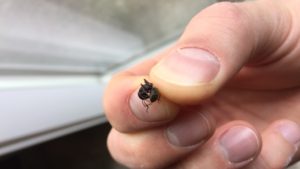how to get rid of carpenter ants in trees,how to get rid of carpenter ants naturally,how to get rid of carpenter ants in my house,how to get rid of carpenter ants in bathroom,how to get rid of carpenter ants in the home,get ride carpenter ants,carpenter ants identification,carpenter ant bait,natural pest control carpenter ants,pest control flying ants,pest control carpenter bees,pest control black ants,pest control sugar ants,orkin carpenter ants,terminix carpenter ants,pest control termites,nys ants,exterminating carpenter ants cost,exterminating carpenter ants in house,exterminating flying ants,exterminating black ants,exterminating sugar ants,exterminating fire ants,exterminating red ants
Carpenter Ant Exterminators,Carpenter Ants Feeding Habits,Pest Control Carpenter Ants Cost,Ant Removal Services,Ants Extermination Methods,What Kills Carpenter Ants,Natural Carpenter Ant Control,Ant Extermination Companies,Ant Extermination Home Remedy,Spray for Carpenter Ants
Carpenter Ants Extermination,Carpenter Ants Control Service,Pest Control Carpenter Ants Cost,Carpenter Ants Removal,Cost of Ant Extermination,Exterminator for Carpenter Ants,Termite and Carpenter Ant Control,Fire Ant Extermination
There are two types of carpenter ant nests: parent colonies and satellite colonies. Parent colonies are typically established outdoors in moist wood including rotting trees, tree roots, tree stumps, and logs or boards lying on or buried in the ground. They may also nest in moist or decayed wood inside buildings. Wood decay may be caused by exposure to water leaks, condensation, or poor air circulation. Nests have been found behind bathroom tiles; around tubs, sinks, showers, and dishwashers; under roofing, in attic beams, and under subfloor insulation; and in hollow spaces such as doors, curtain rods, and wall voids. Areas around windows and where wood parts touch the foundation may be prone to infestation. Carpenter ants may also nest in foam insulation.
Parent carpenter ant colonies sometimes establish one or more satellite nests in nearby indoor or outdoor sites. Satellite nests are typically composed of workers, pupae, and mature larvae. A satellite nest with less moisture may only support workers (the eggs would dry out in lower humidity). For this reason, satellite nests can be found in relatively dry locations, such as insulation, hollow doors, sound wood, and wall voids. The workers of satellite colonies move readily between their nest and the parent colony. In late summer, winged reproductives (i.e. queens and males) may emerge from pupae transported into satellite colonies. They may appear in structures in late winter and early spring as they swarm from a satellite nest. Carpenter ants may move eggs into satellite nests inside a house or other structure if there is enough moisture.
Carpenter Ants are controlled through the application of insecticides and sprays in various forms. These forms include liquid concentrates, baits, dusts, and foams.Some products for carpenter ant control that are available in stores contain boric acid, an odorless, nonstaining powder that kills ants and other pests. The active mineral in boric acid has herbicidal, fungicidal and insecticidal properties.In controlling carpenter ants, boric acid can be a dry powder or a liquid insect bait solution that contains a food attractant. Boric acid acts as a stomach poison for carpenter ants and other insects. The dry powder is intended to adhere to an insect’s exoskeleton. The insect would ingest the powder when it grooms its legs to clean off the powder. The powder form of boric acid is injected into crevices and cracks, where it forms a layer of dust. When carpenter ants travel through boric acid dust, borax adheres to their legs. They ingest the poison while grooming, potentially leading to death.However, boric acid bait solutions must be carefully formulated, and there is no guarantee that over-the-counter solutions will kill a colony. If the risk of property damage is severe, consult a pest control professional before treatment.
Non-Repellent Insecticides – Used as perimeter spray.Carpenter ants damage wood by excavating and creating galleries and tunnels for their nest. These areas are clean, i.e. they do not contain sawdust or other debris, and are smooth, with a well sanded appearance .
The damage to wood structures is variable. The longer a colony is present in a structure, the greater the damage that can be done. Structural wood can be weakened when carpenter ant damage is severe.
Carpenter ants rarely nest in dry wood. Indoor infestations can be tracked by points of entry such as attic vents, foundations, cracks, electric wires, pipes and telephone lines. Carpenter ants prefer to nest in structural lumber such as in wall voids, hollow doors, windows and foam panels. Carpenter ants typically seek wood that has been softened by moisture, decay or other insects.
Baits – Used on Carpenter Ant trails.
Dusts – Used in voids and galleries
Foams – Used in voids and galleries
Here’s how carpenter ants control services work for a one-time treatments Lets say a pest control technician come out to treat the house or buiding on July 1st for ants and after two weeks or so you’re still having ants. within 45 days of your original service, the exterminator will come back and retreat the area for only $70, so in this example by August 15th. A lot of ants and it requires more treatments. the call-back rate would only be $50.
Follow-up visits, The reason for this is because the products we applied on the exterior will keep working for 1 to 3 months and applying too much product to where ants are trailing can actually make the problem worse. The pest control technician will make a judgement call depending on the circumstances.
